This Roasted Potato Onion Spelt Bread made it’s debut a few nights ago when I was invited to dinner with my BF and his extended family. The menu included grilled shrimp and mango skewers as well as some delicious scallops and breaded asparagus.
My contribution, of course, was bread and with all this delicious food around, I wanted to make sure it was worthy to be at the same table. I’m happy to say this bread performed with flying colors. It tasted great too!
Potatoes are from the nightshade family which also includes tomatoes, eggplants, and peppers. There are about 1,000 varieties of potatoes grown today. I’m growing a couple of varieties myself. My Yukon gold potatoes aren’t ready for consumption yet so they couldn’t make their debut in this bread, but they’ll get their chance soon.
Potatoes get a bad rap in my opinion. They’re accused of being too starchy, but that’s what makes them so great in breads. The yeast feeds off of the enzymes and the starch in potatoes. Potatoes lend moisture as well as flavor to breads. This helps the keeping quality of breads. In fact, I baked one of these loaves on Sunday and the other one on Monday and it still has a good texture and tastes great.
Roasted Potato and Onion Bread Recipe
Adapted from Bread: A Baker’s Book of Techniques and Recipes by Jeffrey Hamelman
Makes: 3 medium (or one large and one medium) loaves
Ingredients:
Pâte Fermentée
- 2 1/4 cups bread flour
- 3/4 cup water
- 1 teaspoon salt
- 1/8 teaspoon instant yeast
Final Dough
- 2 cups white Spelt flour
- 2 cups bread flour
- 1 cup Whole Spelt flour
- 1 5/8 cups water
- 1 tablespoon salt
- 1 1/4 teaspoon instant yeast
- 1 1/4 cups onions, roasted
- 1 cup potatoes, roasted (Yukon Gold Potatoes are a good choice for this bread, but I used a white potato because that is what I had on hand)
- Pâte Fermentée (all of above)
Directions:
Making the Pâte Fermentée
:Add the flour, yeast and salt to the water and mix until smooth. Cover the bowl with plastic and let it stand overnight or for 12 to 16 hours.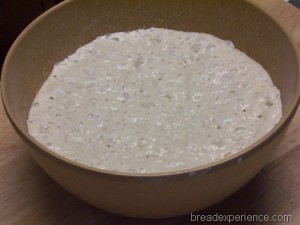
Mixing the Dough:Add all of the ingredients except the Pâte Fermentée and onions to the mixing bowl.
In a spiral mixer, mix on first speed for 3 minutes in order to incorporate the ingredients. As the dough is forming, add the Pâte Fermentée in chunks. Adjust the hydration of the dough if necessary by adding more flour or water. I added more flour. Finish mixing on second speed for 3 to 3 1/2 minutes. The dough should feel smooth and supple and the gluten moderately developed. Add the onions and mix on first speed until they are evenly incorporated.
Bulk Fermentation:Grease a clean bowl and place the dough in the bowl, turning to coat it with oil. Cover the bowl with plastic wrap and let it ferment for 1 1/2 hours.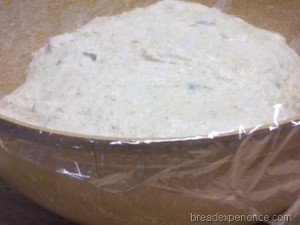
Folding the Dough:Fold the dough after 45 minutes of bulk fermentation. Then place the dough back in the bowl to ferment for another 45 minutes.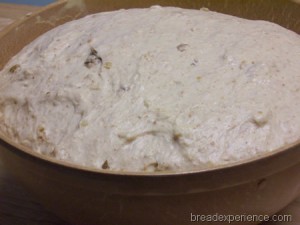
Dividing and Shaping the Loaves:Divide the dough into 1.5-pound pieces. I divided mine into a 2-pound piece and a 1.5-pound, approximately. Preshape lightly into rounds and place on a lightly floured work surface, seams up. Cover the rounds with plastic.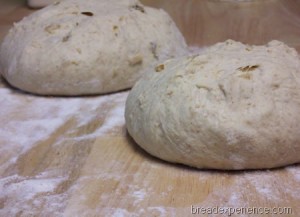 When the dough has relaxed sufficiently, (about 10 to 20 minutes), shape the rounds into round or oval loaves and place in floured banneton baskets for proofing. Or, if you prefer, you can place them between folds of baker’s linen or in loaf pans. Cover the dough rounds with plastic wrap and let them proof for approximately 1 1/4 hours.
When the dough has relaxed sufficiently, (about 10 to 20 minutes), shape the rounds into round or oval loaves and place in floured banneton baskets for proofing. Or, if you prefer, you can place them between folds of baker’s linen or in loaf pans. Cover the dough rounds with plastic wrap and let them proof for approximately 1 1/4 hours.
Baking the Loaves:Preheat the oven to 450 degrees.I baked the large loaf in my La Cloche and the other loaf freeform on a baking stone using a steam pan underneath. I’ll outline the process I used for the La Cloche below.To prepare the La Cloche Stoneware Baker, I sprinkled it with Semolina flour. You can use cornmeal but the semolina was easier to get to so I used it instead.
You can proof the loaves in the La Cloche if you prefer, but I wanted the flour rings on the dough so I proofed them in the bannetons, then placed them in the La Cloche for baking.
Slash the desired scoring pattern using a serrated knife or blade.
Once the oven is preheated, place the La Cloche baker in the oven and cover it with the lid.
Bake the loaf for approximately 40 minutes. After about 25 minutes, remove the lid and let the loaf finish baking for the final 15 minutes.
To keep the stoneware baker from cracking when you remove it from the oven, you need to place it on something that won’t cause an extreme temperature change. I placed it on towels on top of a wooden cutting board.
At this point, I put the large loaf in a basket and transported it to the dinner. We tried some of the bread before dinner and with dinner. Everyone thoroughly enjoyed it. They liked it with olive oil or butter. I preferred it with the olive oil. It didn’t need any herbs.
I didn’t have time to bake both loaves before dinner so I put the other banneton basket with the small loaf in it in the refrigerator to retard overnight. I baked the second loaf the next night on the baking stone and it turned out great. I’m still enjoying it.
Happy Baking!
Cathy
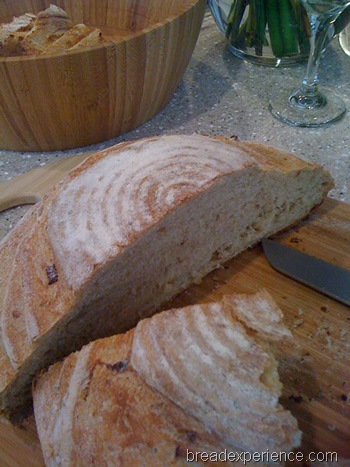
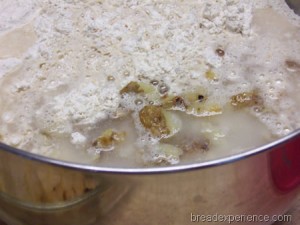
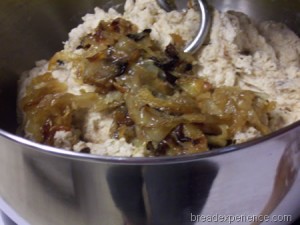
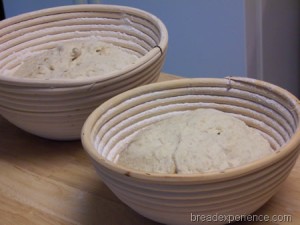
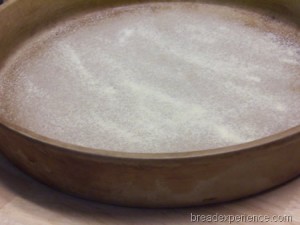
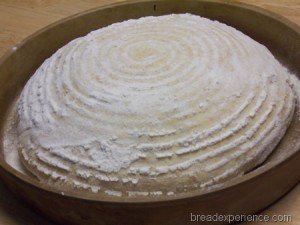
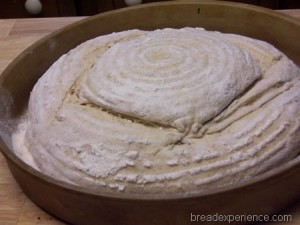
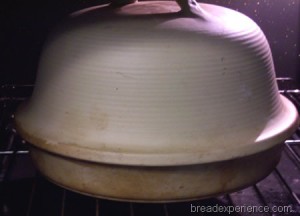
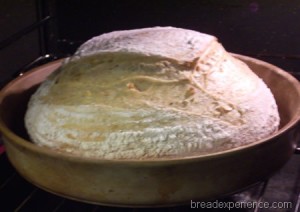
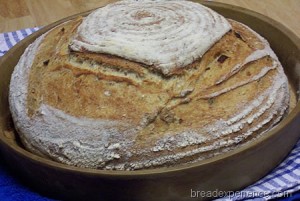
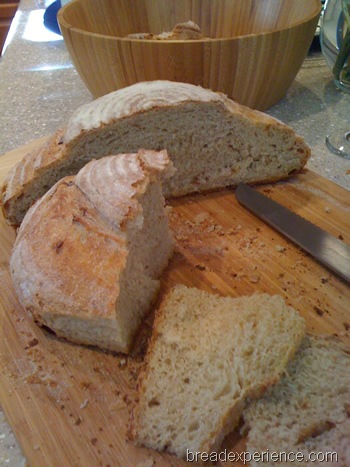
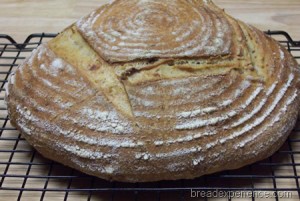
Derryn Snowdon says
Thanks so much for shring these lovely recipes. I love the detail and the obvious passion and flare you have for bread baking. I’ll be recommending your blog and site to friends looking to learn bread baking skills. Derryn Snodwon.
Cathy W. says
Thank you Derryn! I’m so glad you like my site.